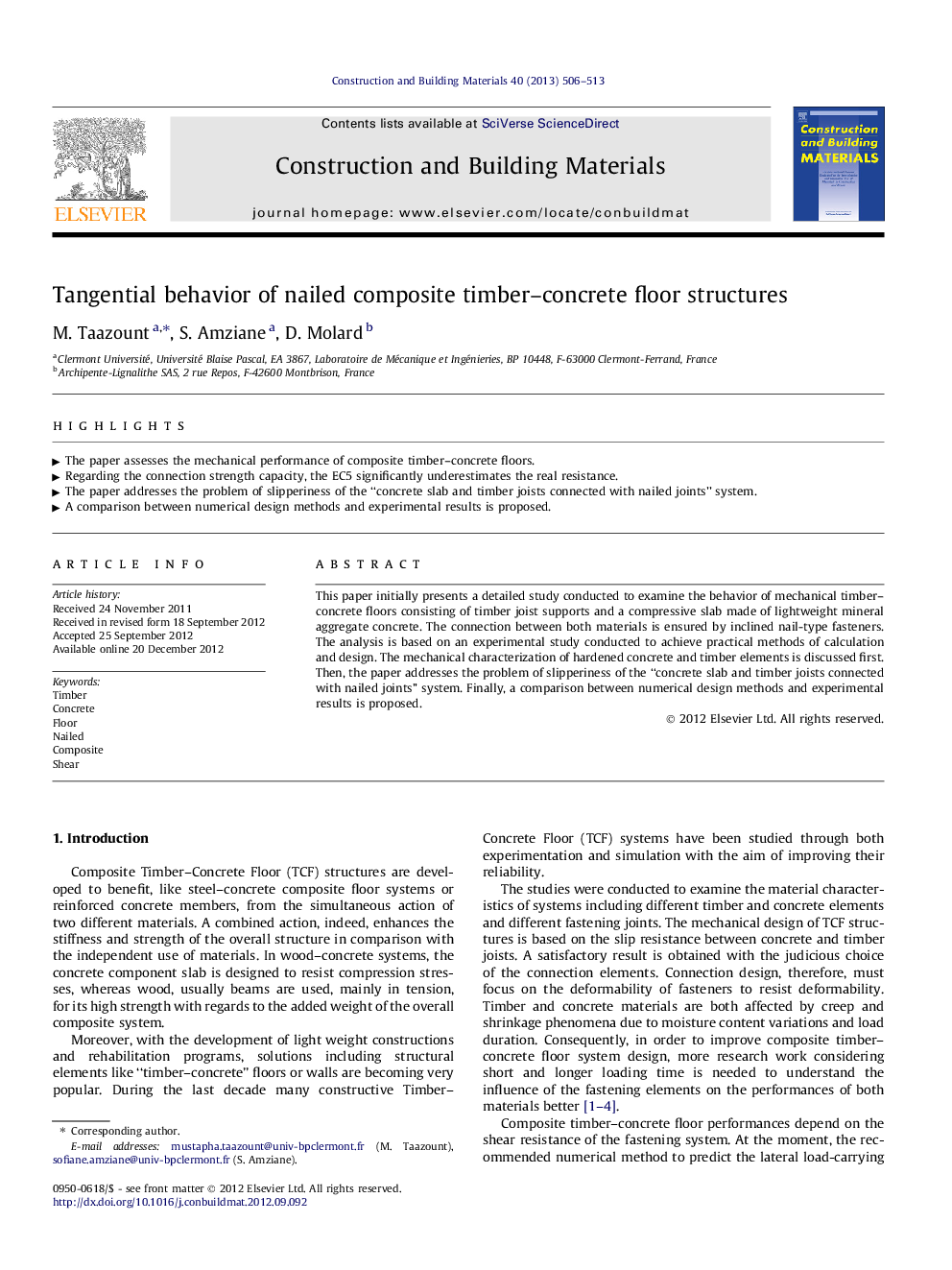| Article ID | Journal | Published Year | Pages | File Type |
|---|---|---|---|---|
| 258290 | Construction and Building Materials | 2013 | 8 Pages |
This paper initially presents a detailed study conducted to examine the behavior of mechanical timber–concrete floors consisting of timber joist supports and a compressive slab made of lightweight mineral aggregate concrete. The connection between both materials is ensured by inclined nail-type fasteners. The analysis is based on an experimental study conducted to achieve practical methods of calculation and design. The mechanical characterization of hardened concrete and timber elements is discussed first. Then, the paper addresses the problem of slipperiness of the “concrete slab and timber joists connected with nailed joints” system. Finally, a comparison between numerical design methods and experimental results is proposed.
► The paper assesses the mechanical performance of composite timber–concrete floors. ► Regarding the connection strength capacity, the EC5 significantly underestimates the real resistance. ► The paper addresses the problem of slipperiness of the “concrete slab and timber joists connected with nailed joints” system. ► A comparison between numerical design methods and experimental results is proposed.
